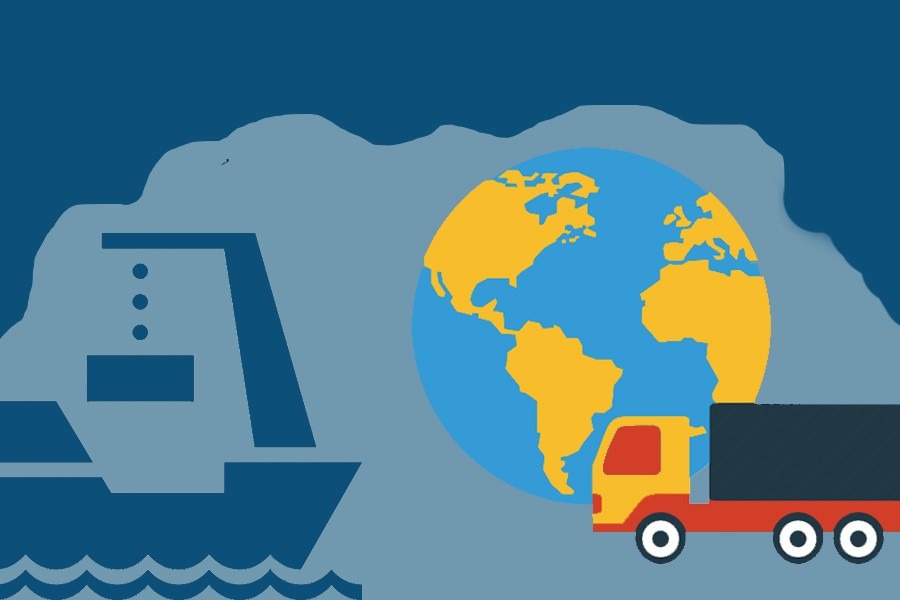
Published :
Updated :

The country's export sector admittedly faced unprecedented challenges posed by difficult domestic as well as external factors in the previous calendar year. Even so, it pulled through these difficulties rather commendably earning USD48.28 billion from exports in the last fiscal year(FY25). Obviously, this has been encouraging enough for the policymakers in the interim government and the businesses concerned to set reportedly higher export targets for both merchandises and services totalling USD63.5 billion marking a 16.5 per cent growth over the past fiscal's performance in the current fiscal year (FY26). This is undeniably a positive development for the country's export trade. And as expected, the knitwear and woven garments grabbed the lion's share of the export targets so envisaged followed by leather and leather goods, especially footwear. The targets for home textiles, agricultural products, jute and jute goods, frozen and live fishes, however, have been set albeit less ambitiously.
Those at the policy level including the commerce adviser and the commerce secretary who made the announcement of the export targets at a press briefing on Tuesday last, however, held that the targets were rather conservative and that any possibility of setbacks in achieving those targets would be addressed through holding discussions with the stakeholders including the industry leaders concerned. This unquestionably sets a positive example of partnership of the policymakers in the government and businesses doing the actual hard work of production and trading of the commodities at the field level to make export targets more realistic and pragmatic. Having said that it would also be worthwhile to draw the policymakers' attention to the fact that their entire efforts at planning the export targets centred around the comfort zone of mainly the garment and-related commodities. There are also issues of these traditional export goods and markets to be overcome. At this point, it's worth noting with concern how Bangladesh's single-product dependent export sector had come up against a veritable existential threat with one of its export destinations, the USA, raising its imports tariffs at a much higher level than those were in the past.
That means Bangladesh's export sector lacking diversity both in terms of number and quality of the commodities it sells abroad gets overly upset at any changes at the policy level or otherwise in overseas markets. But an export-oriented economy need not bend over backwards to settle trade related issues with its international partners. It needs also to have the necessary cards in hand so it can negotiate with its international trading partners from a position of advantage. In that case, there should be wider openings for our products in the global market with a more extensive range of products on offer to strengthen its capacity for negations with regional and international trading partners. However, to maintain the edge over its regional competitors, the labour-intensive garment industry will be required to enhance the productivity of its workforce with improved working conditions, ensuring a living wage as well as upskilling the workers. The government needs to support the backward linkage industries for the sector to reduce its dependence on imported raw materials and thereby add more value to its products.The next potential sector, the leather and leather-based products, needs policy-level interventions to overcome its compliance issues while accessing overseas markets. And those have mostly to do with the certification from Leather Working Group (LWG). To meet LWG requirements, the tanneries must be environmentally sound through proper treatment of its effluents. To this end, the Central Effluent Treatment Plant (CETP) at Savar Tannery Industrial Estate (STIE) has to be functional to make that happen. Once the local leather and leather products industries are able to get around their compliance-related hurdles, they will leapfrog from its currently low-value markets into the high-value Western ones.
Hopefully, the finance ministry committee working to this effect would also take similar steps for ensuring the growth of jute goods, agricultural products, agro-processed goods and pharmaceuticals markets overseas. In fact, there is no room for complacency over the substantive export earnings made or targeted so far. Further widening product-base and markets should be the goal.


 For all latest news, follow The Financial Express Google News channel.
For all latest news, follow The Financial Express Google News channel.